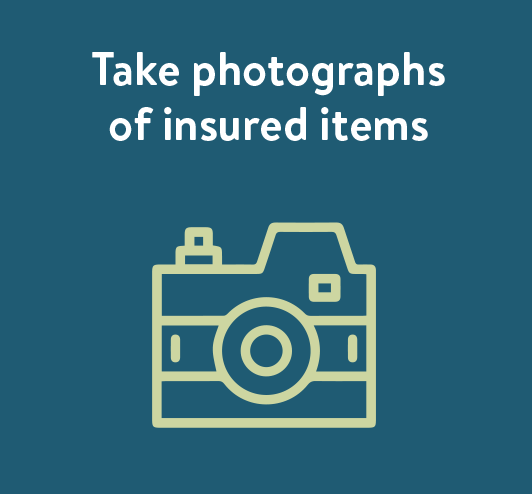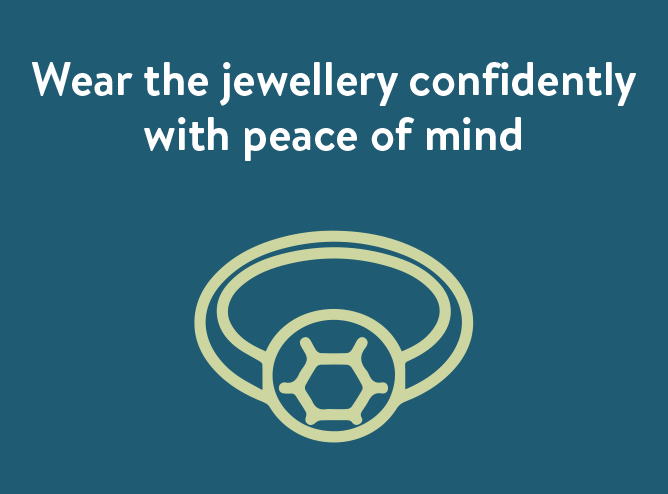Jewellery is used to memorialise significant events, mark important personal milestones, and symbolise life-changing relationships.
Understandably, many people experience emotional devastation when an important piece of jewellery is lost or damaged. That damage is magnified further when a significant financial loss is factored into the equation.
It’s an unfortunate fact of life that many people will experience this at one stage or another.
Similarly, the businesses that create and sell these personal treasures — jewellery retailers — are also susceptible to an emotional and financial ordeal in the unlikely event of a robbery, property damage, or unforeseen misfortune.
Over the past six months, Jeweller has extensively documented changes in the Australian jewellery industry over the past decade.
These changes have not only impacted businesses and consumers. They’ve also transformed the relationship between businesses and/or consumers and insurance providers.
Said another way, traditional forms of risk management have evolved for jewellery retailers and business owners.
When it comes to insurance, jewellers have been forced to rethink their financial safeguards — whether it be accounting for the coverage associated with staff working from home more often or remaining conscious of the impact of an increased digital presence on their business.
Under-insurance remains a significant risk for jewellery stores.
In simple terms, under-insurance occurs when you don’t have enough insurance to cover the replacement value of the insured items.
Most people and/or businesses that have found themselves under-insured do so because they haven’t appropriately calculated the current replacement value of their property and revenue.
Kalin Insurance Services provides Jewellers Block Insurance, offering businesses coverage in a range of areas.
Discussing the evolving relationship between jewellery and insurance, Account Manager Sophie Hudson believes that with inflation driving up the cost of raw materials and rebuilding expenses soaring, businesses need to ensure that their sums insured are adequate in the event of a loss.
“If a business does not have adequate insurance coverage, they risk closure of their store after a loss. Jewellers also need to ensure that their security is being updated with modern technology and is not falling behind,” she says.
“During economic downturns or periods of financial instability, an increase in theft and property crimes occur as individuals seek ways to obtain quick cash or valuable items; being aware of the current financial climate is a critical aspect of any risk management plan.”
Crime and punishment
Surprisingly, studies about the connection between periods of economic downturn and crime have produced mixed results.
A study by the Congressional Research Service in the US analysed the relationship between crime and the economic downturn since 1960 and found no indisputable correlation.
With that said, the logic is difficult to refute: in times of economic turmoil, people will turn to illicit means of income out of desperation.
This was particularly evident during the COVID-19 pandemic when incidents of crimes targeting retail businesses and employees consistently made national headlines.
As recently as March, a Victoria Police spokesperson attributed a significant increase in retail thefts to rising cost-of-living pressures.
Alexander Thornton is the founder of Quantum Underwriting Agencies, offering Jewellers Block Insurance and coverage for private collections. He is also conscious of the impact crime can have on business owners.
“Jewellers face constant threats from crime, from small snatch-and-grabs to full-scale armed robberies,” he explains.
“We have a dedicated claims team in Australia, and with our network of assessors, we do our very best to help our clients get back on their feet as quickly as possible.”
Jacqui Thompson, managing principal of PSC WSC Insurance Brokers, which has been offering Jewellers Block Insurance for more than 30 years, also raised this topic.
Despite being an unfortunate fact of life, many business owners are unprepared for the full impact of crime, and Thompson says maintaining a strong relationship with an insurance broker can soften the blow.
“A significant loss can be a very stressful and disruptive time for a business. We assist with the claim preparation process to help take away this burden from businesses,” she explains.
“We advocate for the client in order to reach the best possible result and work closely with insurers to facilitate an efficient outcome with minimal impact on the business.”
It’s important to note that protecting your jewellery business is difficult with a ‘one-size fits all’ approach. For example, jewellery stores in shopping centres should be considered in comparison with stores in high streets.
Shopping centres are an appealing prospect for jewellers for many apparent reasons. They provide a steady stream of shoppers and potential customers who may roam the store.
These centres also offer other benefits greatly desired by jewellery businesses when compared with other retail operations – security.
Due to the nature of the high-value product, a jeweller on a suburban high street is more susceptible to burglary and robbery than a store in a large suburban shopping centre.
This is an important factor to consider when determining insurance requirements, and Hudson says it’s an equation that serves as a good reminder that insurance should be tailored appropriately.
“Both store models have different restrictions on security. Street front jewellers face the risk of ram raids, smashed shop front windows, no centre security,” she explains.
“Shopping centre jewellers have high foot traffic, making it more difficult to identify casing; there are plenty of escape options for thieves.”
Hudson suggests that maintaining a strong relationship with security providers and insurance brokers is essential to weathering an unforeseen storm.
“Having a strong relationship with your security provider and insurance broker is invaluable. Reviewing your security and record-keeping processes regularly ensures you and your staff are constantly operating from a risk management frame of mind,” she continues.
“Having an insurance broker who can assist you in identifying your major risk, transferring some of that risk to an insurance policy and ensuring your coverage is adequate is essential.”
PROTECTING PRECIOUS ASSETS
|  |  |  |
|
Positive signs
When discussing the relationship between jewellery and insurance, it’s easy to focus on the negatives. With that said, insurance has evolved in recent years in a way that mirrors developments in the retail sector.
In recent years, Artificial Intelligence (AI) has been a passionately debated topic in the broader retail sector. The promises of enhanced efficiency and effectiveness have enchanted business owners. The hope is that new technologies will improve outcomes and benefits for businesses and consumers.
When is anything ever that simple? Implementing these new tools will increase the need to account for employee morale and cohesion, job security, and customer service.
Just as retailers are juggling the implementation of AI, insurance companies are, too. Algorithms can be trained to detect fraud patterns in claims, helping companies identify fraudulent activities before they result in financial losses.
By leveraging customer data, insurers can use AI to develop personalised products and services that better meet individual customer needs.
The tools can also automate customer inquiries and claims processing, allowing brokers to provide faster service.
Thornton says it’s fascinating to witness a range of sectors simultaneously tackle and embrace the impact of emerging technologies.
“The insurance industry, like many others, is facing enormous change with AI and other emerging technologies,” Thornton explains.
“I’m sure the same could be said for any industry. In service industries such as insurance, you can’t afford not to pay attention to these developments as you strive to be as efficient and effective as possible.”
He explained that, as is always the case when industries undergo significant periods of change, patience and strategic implementation are crucial to success.
“When you’re dealing with a physical product – such as jewellery sales – you’re less vulnerable to being replaced, so to speak, by an AI program, but when it comes to the little things, like processing emails, new opportunities are being presented to businesses all the time,” he said.
“It’s something we are keeping a close eye on; however, for now, our focus is on growing our team of wonderful human underwriters and claims specialists.”
Education and expertise
Another critical change to consumer expectations of retailers in recent years is that now, more than ever, consumers are looking for an educational experience when dealing with businesses.
It’s often difficult for jewellers to remember that just because they may be knowledgeable about the topic, their customers may not be.
Recent research has suggested that consumers are more likely to purchase from a business if they engage with ‘early-stage’ educational content.
Said another way, customers enjoy dealing with a business where they feel they learned something important from the experience.
Centrestone Jewellery Insurance offers comprehensive policies tailored to consumers’ needs.
The company emphasises the importance of providing a like-for-like replacement and no cash settlements, meaning customers will return to the original jeweller for a replacement.
Managing director Lachlan Renshaw says that even a casual conversation about insurance between customers and jewellery store employees can strengthen business and consumer relationships.
“Offering insurance [to your customers] is an additional service that can differentiate a jeweller from competitors, adding value to the customer’s purchase experience,” he explains.
“By introducing insurance, jewellers educate customers about the importance of protecting their valuable possessions, fostering a sense of responsibility and care for their items.”
It’s unfortunately easy to imagine the inverse of this situation – and some jewellery businesses have been left dealing with unhappy customers after an unsatisfactory claim on stolen or damaged jewellery.
For example, if a customer doesn’t explore insurance options and adds a new diamond necklace to the home and contents coverage, Tragedy strikes, and the customer discovers that a piece with tremendous sentimental value is only covered for $1,500.
It’s a natural reaction to want to ‘pass the blame’ in these circumstances.
Some consumers have been quick to judge their jeweller for not warning them of the intricacies of insurance.
Renshaw says that educating consumers is a simple, often-overlooked tool in the arsenal of many jewellery retailers.
“When you look at some of the most successful jewellery businesses in Australia, something they often share in common is that they’ve emphasised their expertise with consumers,” he explains.
“They’ve educated the market and made it clear that they are experts, and as a result, they’re in high demand.
“Taking the time to talk with your customers about some of the important details of insurance is one of the many easy ways that any jeweller can build a stronger relationship with their customers.”
PROTECTING PRECIOUS ASSETS
|  |  |  |
|
Closing remarks
The relationship between jewellery and insurance is complicated for consumers and business owners.
That said, it is clear that, as is the case with so many things in life, understanding the importance of a measured approach matters more than anything else.
It’s important for consumers to guarantee that jewellery is covered to an appropriate degree. This can be achieved with professional appraisals, market research, gemstone evaluations, metal assessments, and thorough documentation.
For business owners, determining an appropriate level of insurance is achieved by taking the ‘guessing work’ out of calculations by documenting all assets and the cost of their replacement and by consistently accounting for the unique intricacies of the business.
Things like risk management and insurance are seen as administrative tasks that aren’t that important - they’re done in between selling more jewellery.
The reality is that because of jewellery’s high retail value, these ‘administrative tasks’ are crucial to a successful business.
As detailed above, an important factor in the evolution of the relationship between jewellery and insurance is that these products have also become a valuable marketing tool for business owners.
It’s an additional opportunity to emphasise expertise and fostering familiarity and confidence among consumers.
These are crucial practices for both business owners and insurance companies, as no one wants to be left empty-handed when tragedy strikes.
READ EMAG